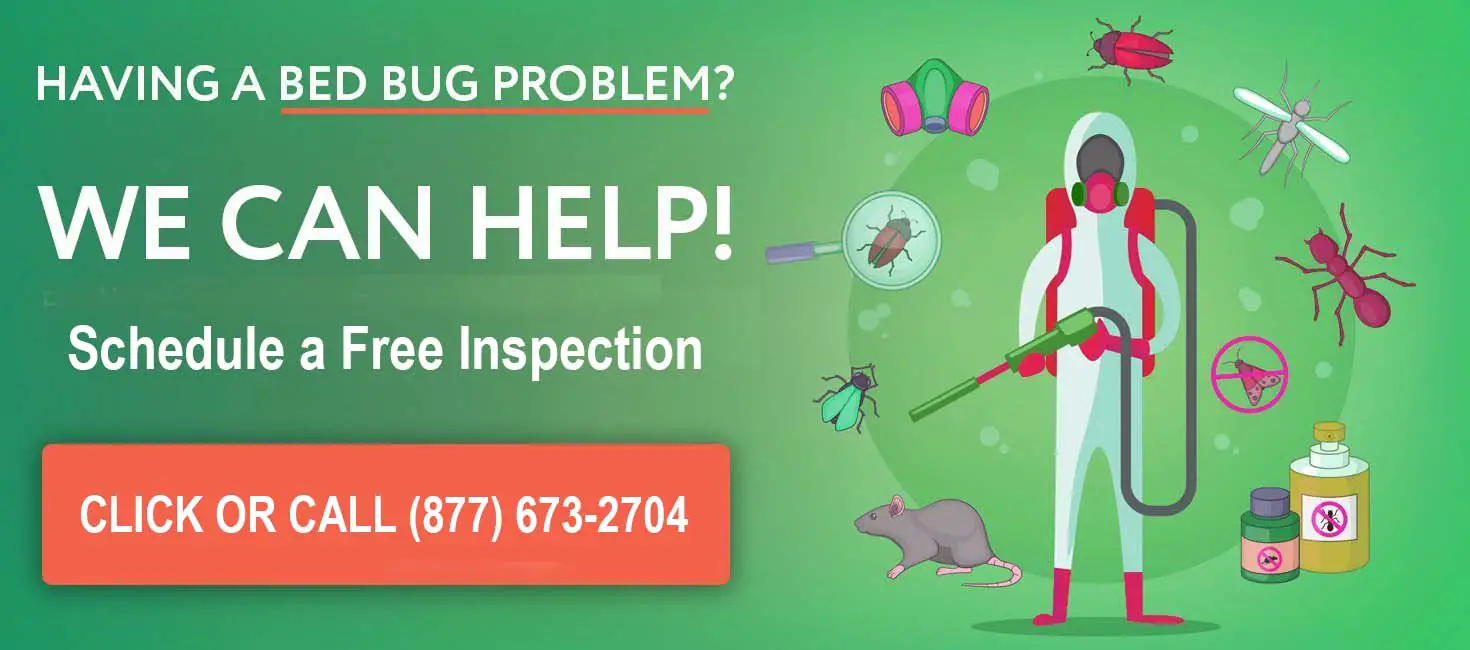Summary
The Bedbug life cycle can be as short as 21 days under ideal conditions, but in most environments, this process will take from 5 to 8 weeks.. This assumes the availability of a warm blooded host such as a human or pet, and temperatures at 86F (30C). From egg to adulthood a bedbug will pass through 5 instars or stages with the last or sixth stage being adulthood. They requires a blood meal to move from stage to stage. A bedbug will live up to 316 days under the conditions described. If no host is available an adult can live just over a year without feeding.
Overview
The Bedbug life cycle starts with an egg. After birth the bedbug will move through 5 instars or stages, ending with adulthood. While they are moving through the 5 stages they are referred to as a nymph.
In order to move from stage to stage during the lifecycle of a bedbug, a bedbug needs to feed on a mammal. They prefer human blood, but will feed on other available animals such as a pet or bat. They can feed several times during each stage and as much as 1x per day. As the bedbug moves from each stage or instar they will molt as they grow.
A bedbug will impale its human host at night to withdraw blood, although if a bedbug has gone without feeding, they might try and feed during the day. A nymph will look for a blood meal right after hatching from an egg.
Room temperate plays a role in how fast bedbugs move through the life cycle. If the temperature is between 70 and 80 degrees F, the bedbug takes approximately 4 to 5 weeks at 83-90 degrees F to move from egg, through the juvenile or nymph stages, and to adulthood. Three generations of bedbugs could be born in a year. The lifespan of an adult is 10 to 11 months, although they could live for a year without feeding.
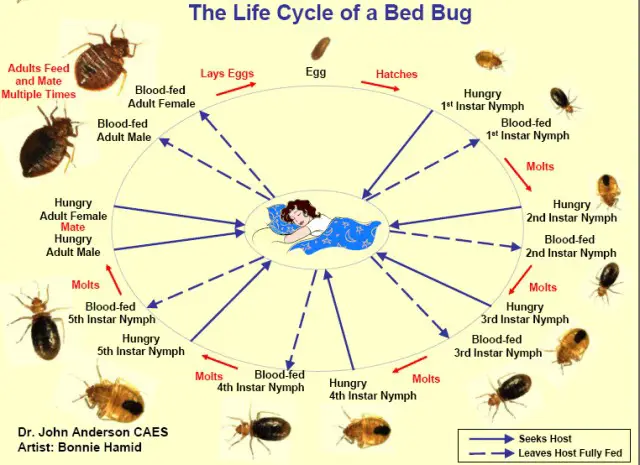 Lifecycle of Bedbugs Growth Chart
Lifecycle of Bedbugs Growth ChartBedbug Life cycle - Time to Complete 1 Generation
The rate that bedbugs move through their lifecycle is based on the temperature of the room they area living in. Higher temperatures (80 degrees F) slow down bedbug growth. Bedbugs and their eggs are killed at 114 degrees F.
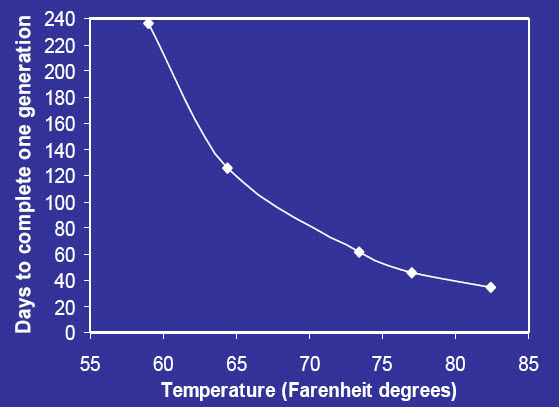 Days To Complete One Generation of Bedbugs
Days To Complete One Generation of BedbugsBedBug egg - Stage 1
A female bedbug will lay 1 to 3 eggs per day and 200 in a lifetime. The bedbug eggs stick to areas where they are placed and are therefore difficult to remove with a vacuum. The eggs are approximately 1/16 inch and are oval. They are white/yellow in color.
Bedbug eggs take approximately six to ten days to hatch.
Here's a great video showing a bedbug hatching from a bedbug egg.
Bedbug Video - Bed Bug Hatching from Egg
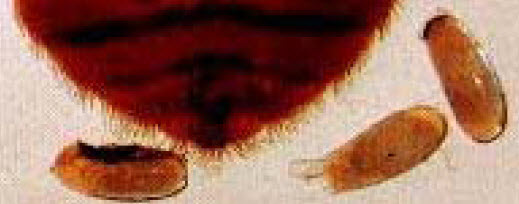 Picture of Magnified Bedbug Eggs
Picture of Magnified Bedbug EggsThe bedbug eggs are the size of a pin head, are white/yellow in color and oval as shown below.
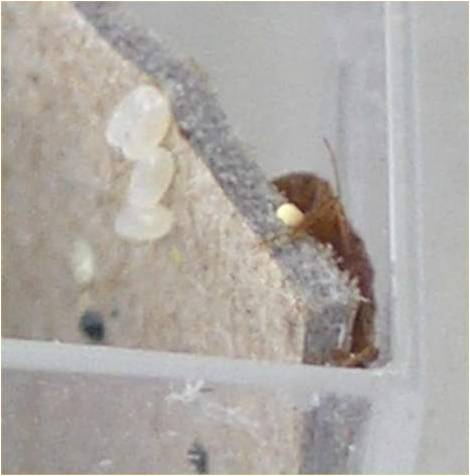 Picture of Bedbug Eggs on a Surface
Picture of Bedbug Eggs on a SurfaceBedbug nymph- Stage 2
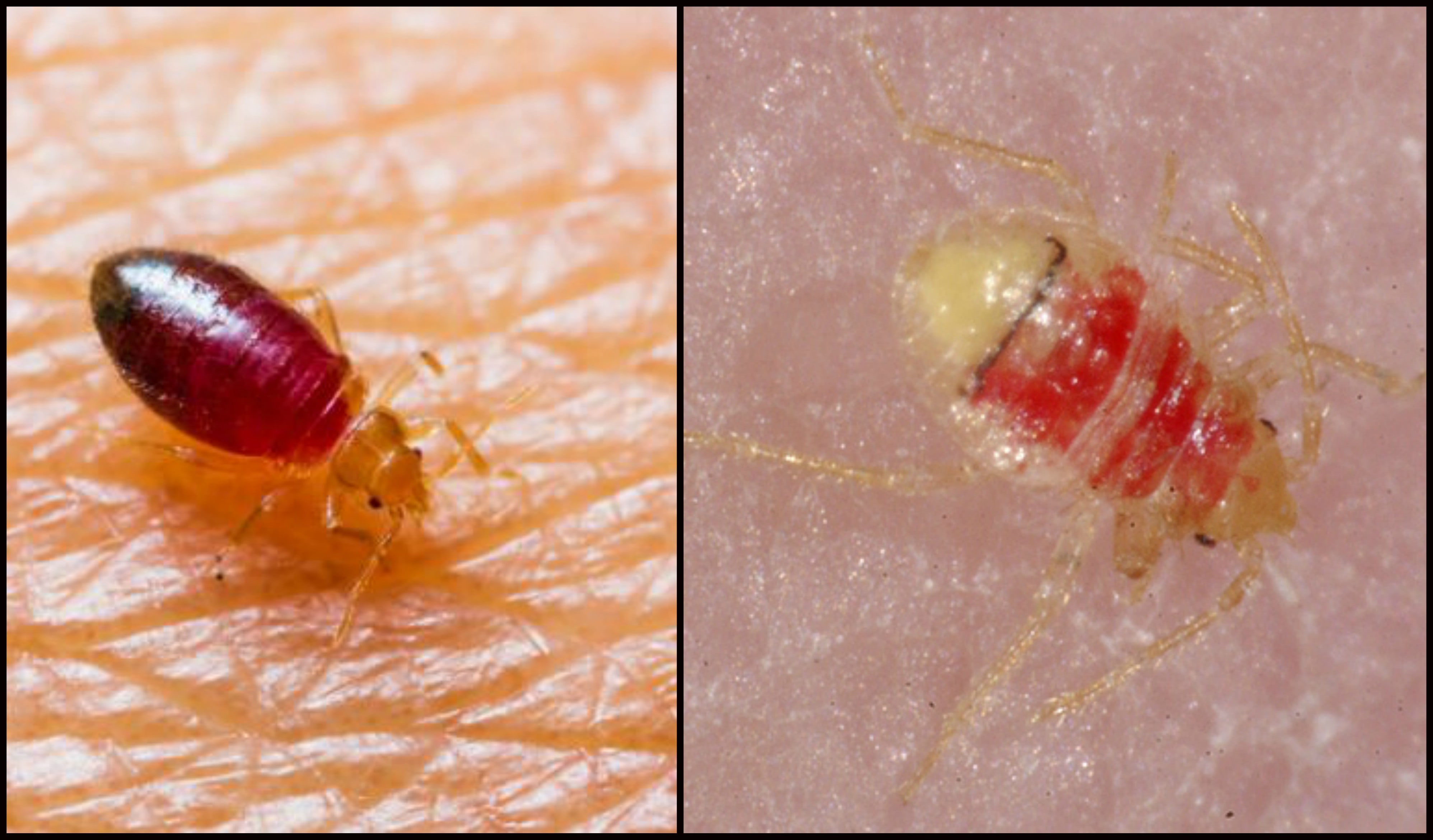 Bedbug nymphs feeding
Bedbug nymphs feedingAs mentioned, after birth, a "baby bedbug" is referred to as a nymph. These nymphs move through 5 stages and molt as they move from stage to stage. In order to move from stage to stage nymphs require a blood meal.
Here's video of a colony of bedbug nymphs and adults:
Bed Bug Nymph Video and Adults in
Colony
BedBug Adult- Stage 3
Adult bedbugs live as long as 316 days. They can survive several months without feeding, but need to feed in order to reproduce. As aforementioned, an adult female lays an average of 200 eggs in her lifetime.
 Clockwise from top left: Adult bedbug on skin, bedbug after feeding, male and female adults
Clockwise from top left: Adult bedbug on skin, bedbug after feeding, male and female adultsbrochures
These free brochure provide additional information on the bedbug lifecycle.
Questions and answers
Ask a Question or Share Your Bed Bug Experience With Others
Do you have a question or great story about bed bugs? Share it!
What Other Visitors Have Said About Bed Bugs
Click below to see contributions from other visitors to this page...
Bed Bug Nymphs In Our Apartment 




Hi,
I have been suffering with bed bugs in my apartment for quite a while. I demanded that the landlord send an exterminator, which they did. He came …
Bed Bugs in Hair Not rated yet
I rented my motel room,took a nap straight away. Woke and got dinner back to the motel to shower. Then laid on the bed to read and saw a bed bug crawl …
references
John F. Anderson PHD
Distinguished Scientist
CT Agricultural Experiment Station
Connecticut Coalition Against Bed Bugs
CT Agricultural Experiment Station
